Cigar Box: How to Build a Cigar Box Guitar for Around $25

I've decided to start this off by using the most common saying heard when someone lays their eyes on one of my guitars for the first time (myself included): "It’s a cigar box guitar!"
Yes, and it's played similar to a regular guitar and can do almost anything a regular guitar can do; it just takes some creativity and a little imagination, much like the building process.
After my initial reaction to seeing a cigar box guitar, my second thought was, “I want to make one of those!” Then, my initial reaction when I made my first CBG (cigar box guitar) was, “I want to make another one!” — and my obsession was born.
The idea of this series of columns is to show you how to make one of these three-string guitars and to showcase some notable players and builders.
Some people ask me, “Aren't you afraid the big guitar companies are going to find out about cigar box guitar and start making them?”
I doubt Fender or Gibson would be interested in making these guitars; besides, what makes CBGs cool is that they are handmade, and no two guitars are alike. So I’ve decided to let you in to our secret underground world that is cigar box guitars.
Cigar box guitars are often associated with the Depression era, when regular guitars were handmade and cost a great deal of money. People didn’t have extra income to buy guitars, so they got creative. They got a wooden cigar box, put a hole in it for the sound to get out, put a stick in it and a few wires from the screen door — and a guitar was born. Actually, cigar box guitars go back much further than that. There's evidence that they were around as early as the 1840s, and similar primitive or primal instruments go back even further.
Get The Pick Newsletter
All the latest guitar news, interviews, lessons, reviews, deals and more, direct to your inbox!
Today, people make them out of just about anything that will resonate or vibrate, such as an oil can, coffee can, wine crate or soda can. They also use many different things for a neck, like an ordinary 1-by-2 piece of hardwood, broom handles, even wooden rulers.
The number of strings can vary, too. I’ve seen them with one string (Diddley bow) on up to 12. I tend to stick to three- and six-string cigar box guitars because you need at least three strings to make a chord, and people are comfortable playing six-string guitars. They also can be fretted or fretless and are played with or without a slide. CBGs also can be wired with pickups, volume and tone controls, just like regular guitars.
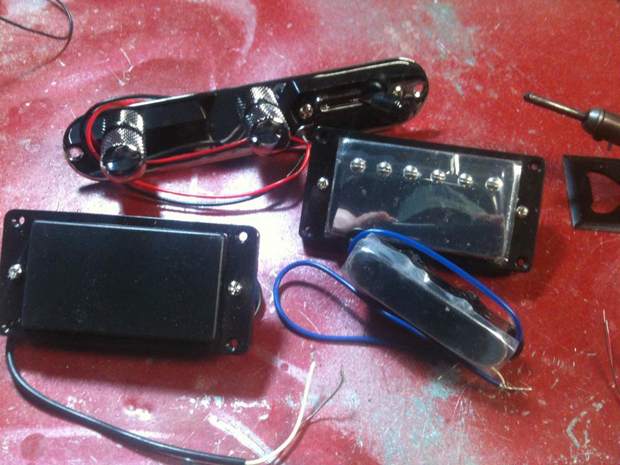
If you want to hear scrape, slide and picking, check out Shane Speal, the world's foremost master of the cigar box guitar.
Speal performs gritty blues/rock with handmade and hackwired instruments made from recycled junk. His repertoire is a mix of crankin' originals and songs from blues masters who started out on cigar box guitars.
Here's a video of different ways to tune your CBG so you can get the most out of your box. What Speal can do with a stick in the box and a socket from a hardware store for a slide (Yes, that's a socket he's using for a slide) blows my mind.
Speal is a key player and builder in the CBG world and was instrumental in bringing people together to share their thoughts and ideas about CBGs — but more on that later.
So the blues isn’t your thing? Not to worry; I’ve seen people play these guitars in nearly every genre. Like I said, you can play anything on a cigar box guitar; you just have to use some creativity and a little imagination.
Check out Hollowbelly; listen to this song and I promise it will change your perception of what can be played on a cigar box guitar. Hollowbelly is a one-man-band/cigar box guitar player whose guitar has a mean growl that just can't be explained and a voice that has been described as "like lightning."
He has played London's The 100 Club (Yes, THE 100 Club, which has hosted Sex Pistols, Muddy Waters and the White Stripes) on a CBG. He made it in a garage out of a banister rail, an old rusty tin and a cheap pickup. When I need that jolt of energy to keep going, this song delivers.
So why am I writing this? I am addicted to CBG. Yep, addicted, obsessed. I’ve got the sickness and there is no cure. Besides, there are worse things to be addicted to. I spend my days thinking about how I am going to build the next guitar better and how I am going to convert that song I used to play on a six-string so I can play it on one my three-string guitars.
I thought there might be more people out there like me. So over the next few columns, we are going to build a cigar box guitar together for about $25. We are going to make a classic fretless acoustic cigar box guitar.
I will show you the upgrades as we go along; it will just cost a few more bucks. Most of the stuff you can find in your local hardware store. The other stuff you have to buy in different places, but I’ll give you some tips on where you can get the best deals (If not here, I'll give you the tips on my site, sanercigarboxguitars.com.
This is the way I find works best for me. There are many other ways to make these instruments; I’m just showing you the way I like to do it. I have to say there is one rule about cigar box guitars: There are no rules!
Here is your recon mission for next time:
01. Box: Find a wooden cigar box. It has to be wooden — at least the sides and the bottom. But if you can score an all-wood one, all the better. A good size to look for is 10-by-7-by-1. Bigger is better, but if it's a little smaller, it'll still work. The thinner the wood, the better the tone (at least in my opinion). The best place to get them is your local tobacco shop. Most stores give them away for free (Free is good). If you can't find one for free, look on eBay or check out CB Gitty.
02. Wood: You will need to find some hardwood for the neck. A good size is a 1-by-2-by-32 (It really measures 3/4-by-1 ½ inches), and it needs to be at least 32 inches long. Most home-improvement stores sell them in 36-inch lengths.
It has to be a hardwood. Poplar is a pretty inexpensive choice, but red oak, maple, ash or mahogany look great, although they cost a bit more. I go to the local mill and get a batch of rough-cut hardwood and mill it down myself, but that requires some more tools and more time. I wouldn’t recommend this for your first guitar. The stuff you will find at the local home-improvement or lumber yard is good. I’m just obsessed with finding the best.
03. Tools: You will need a coping saw, tape measure, pencil, drill with 3/8, 9/32 and 1/8 bits, rasp (Those rasp/chisels are pretty good for the money) and various grits of sandpaper. If you have a belt sander, it will save a lot of time, but it isn’t necessary. Finally, you will need an old-fashioned miter box and saw.
If you don’t have these tools, borrow them or make this guitar with a friend who has them (Tools aren't included in the $25 budget). If you don’t know how to use these tools, read up on them or look them up via YouTube. I don’t want any of you guitar players to loose a digit while making one of these.
04. Tension pins: You will need three each — 1/8-by-3/4 tension pins or roll pins. These can be found in almost any hardware store.
05. Safety gear: You will need a dust mask, work gloves and safety goggles.
Hey, come to think of it, this doesn’t even add up to $25. Sweet!
This is a list of items for you to find for next time. I'll give you a list at the end of each article so you won’t have to go buy it all at once. But if you want a full list, I will post it on my site, sanercigarboxguitars.com.
Till next time, keep on playing!
Brian Saner owns Saner Cigar Box Guitars, which makes custom handmade guitars and amps using local dry-aged wood in every guitar. These guitars are handmade and might have imperfections, but that's what makes them unique. Once you hear the howl of a CBG, you might not want to play a Fender or Gibson again. Get one at sanercigarboxguitars.com and devildownrecords.com. Check out his Facebook page.
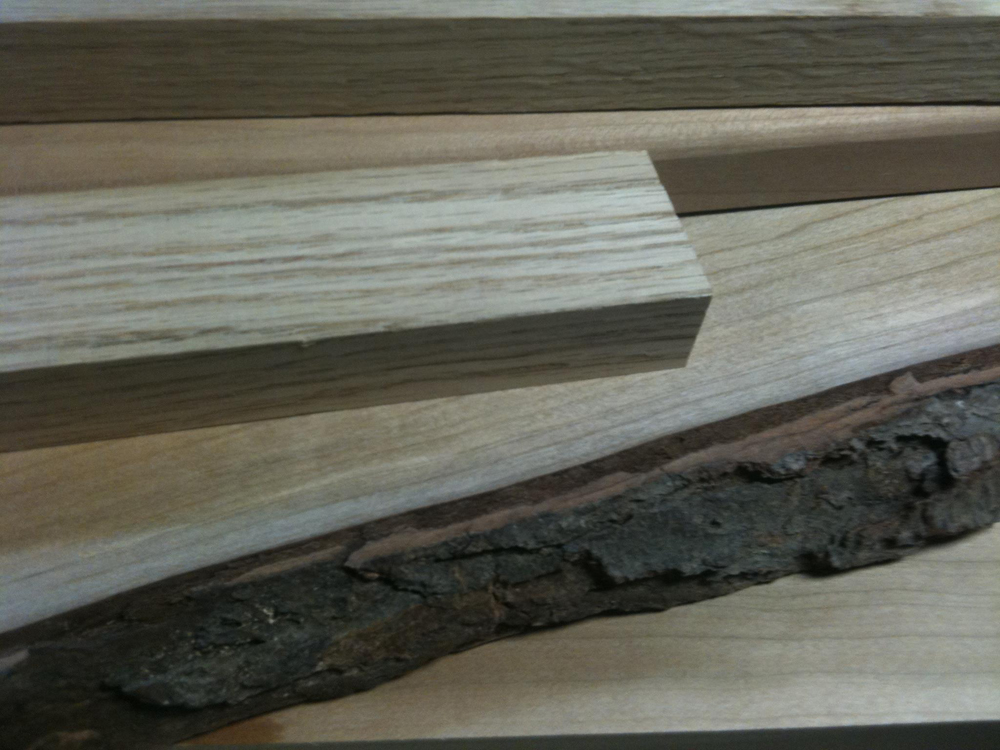

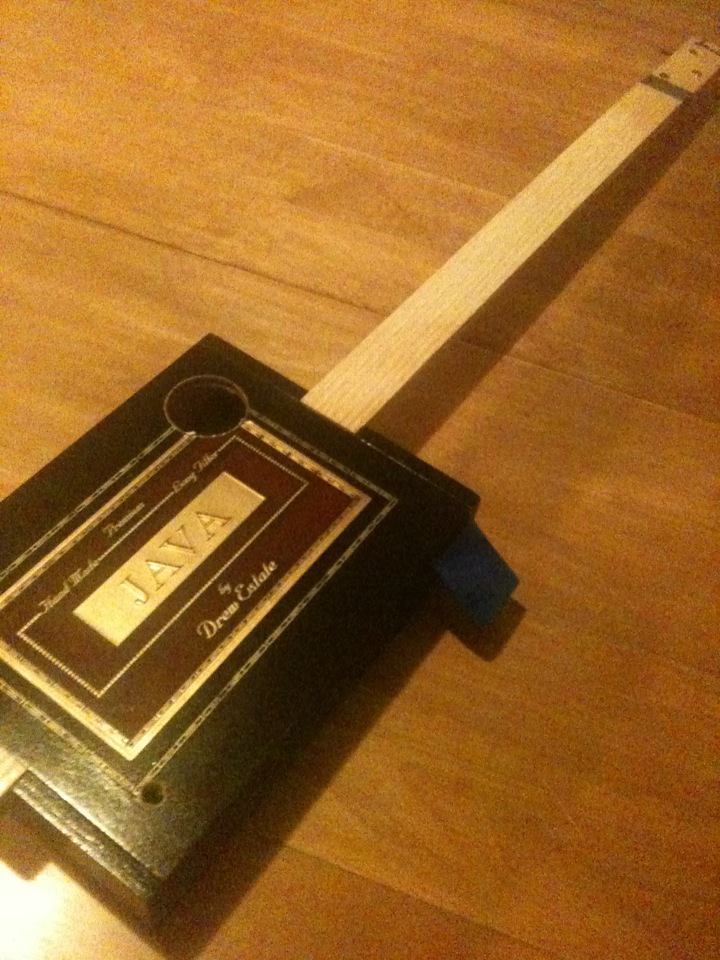


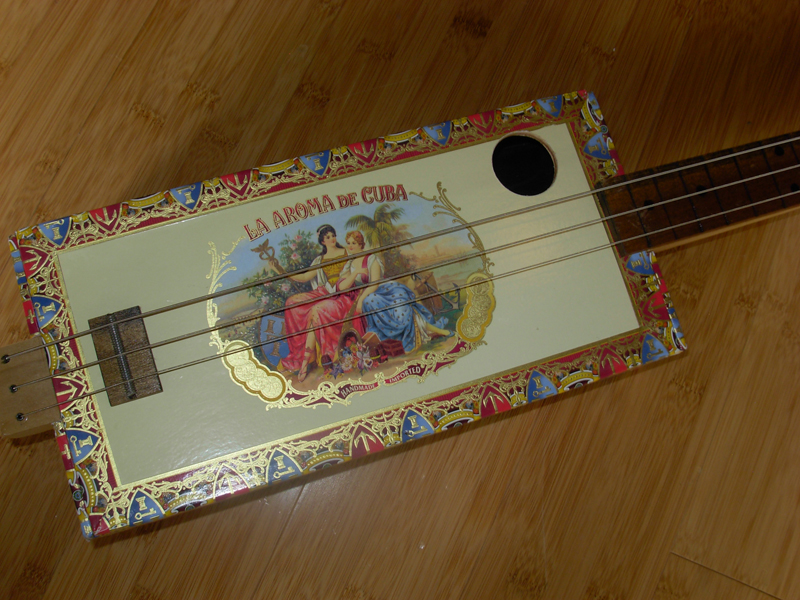
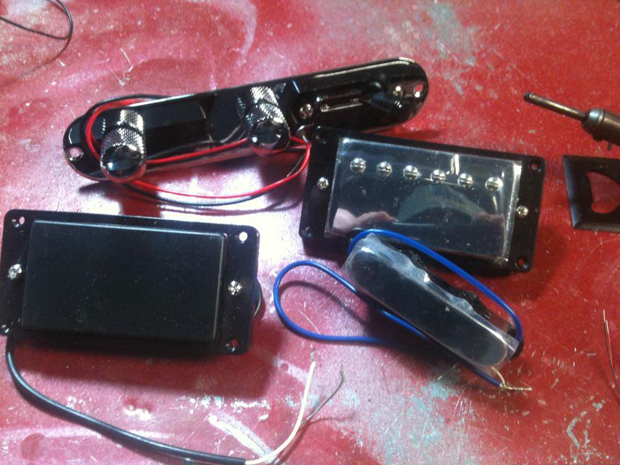
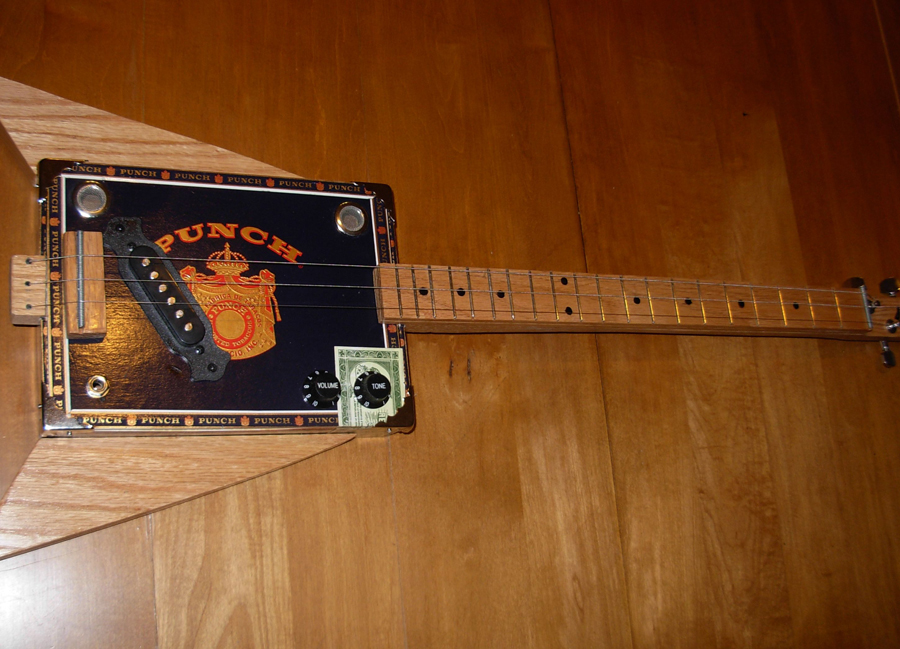
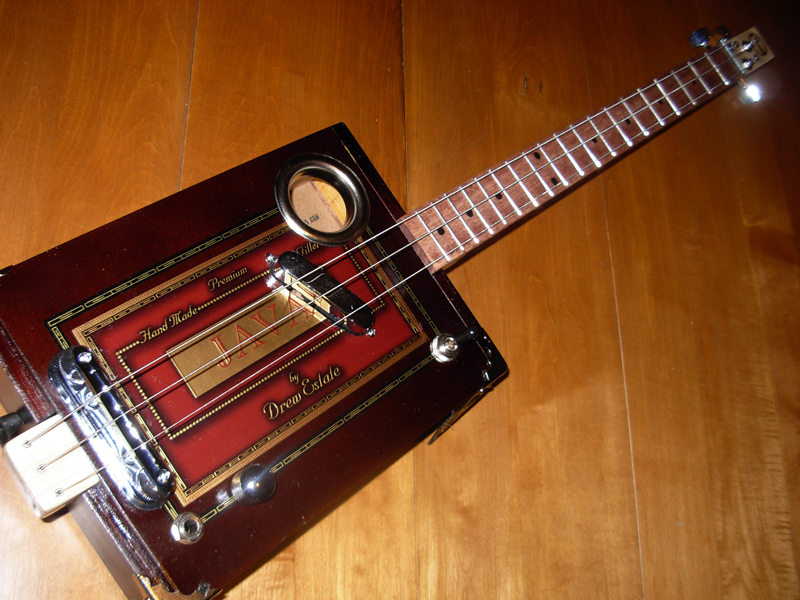
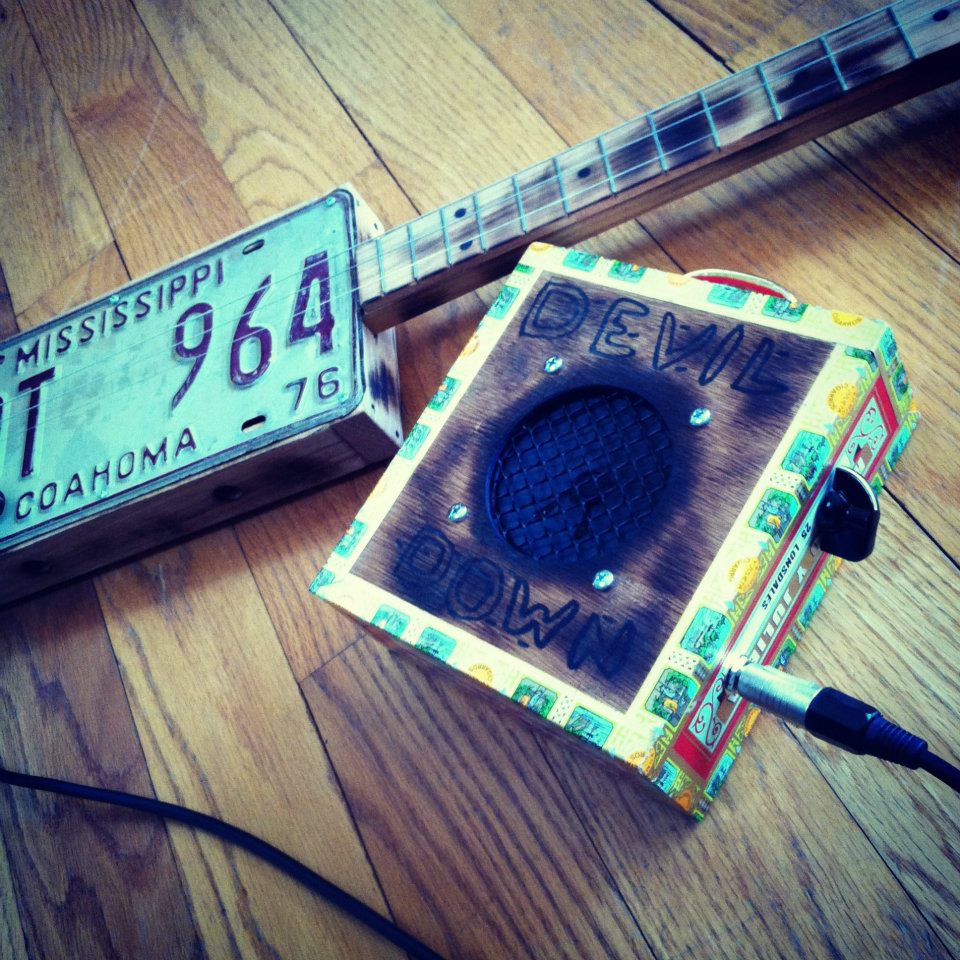
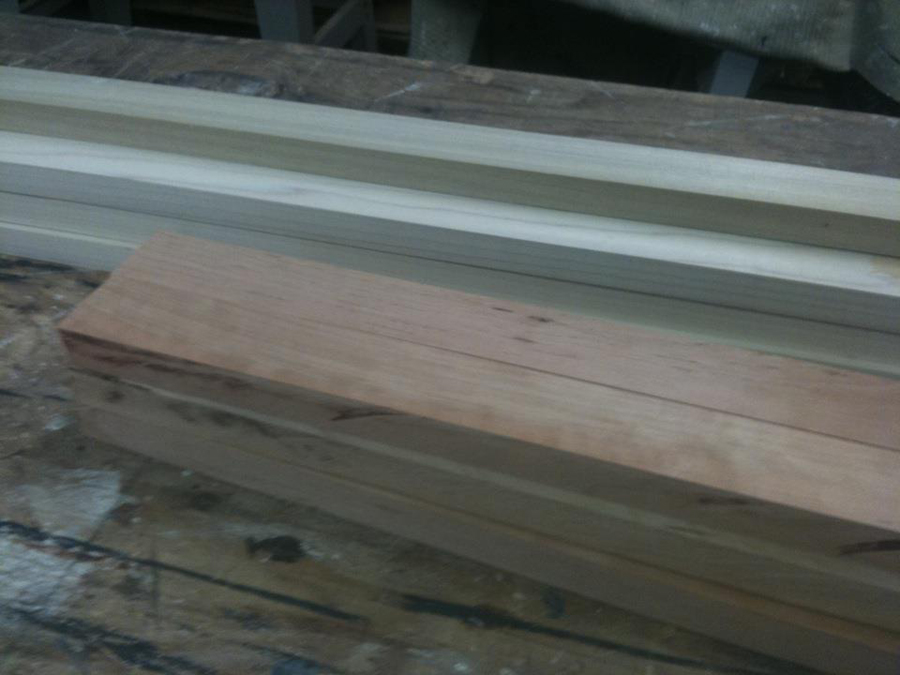


![A black-and-white action shot of Sergeant Thunderhoof perform live: [from left] Mark Sayer, Dan Flitcroft, Jim Camp and Josh Gallop](https://cdn.mos.cms.futurecdn.net/am3UhJbsxAE239XRRZ8zC8.jpg)







